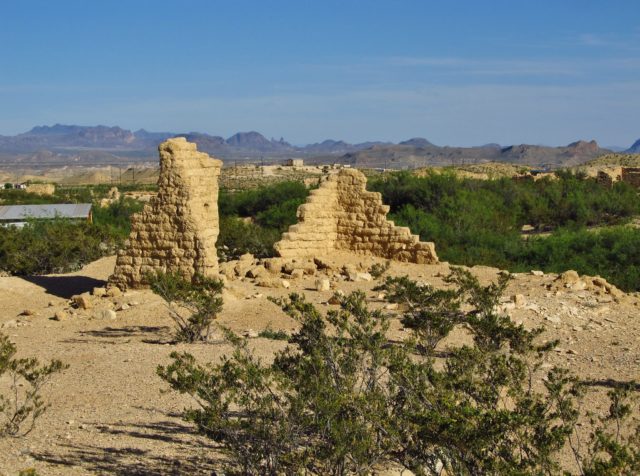In West Texas, USA lies the Chihuahua Desert. In the heart of the desert is the small ghost town of Terlingua. It was once a prosperous mining area but is now reduced to an unusual landmark in West Texas.
At the moment it is half-abandoned, with the 2010 census showing that the population is 58 people. At its peak, it had a population of 3,000 inhabitants.
In the mid-1880s, cinnabar was found in this location. Cinnabar is a mineral from which mercury (quicksilver) can be extracted. This led to a large influx of miners into the area.

In 1888, the first mercury from Terlingva was mined by Jack Dawson. However, development in the area was slow because details of the findings were not publicized anywhere until 1890.
After that, the mining industry began to flourish. In 1900, four mining companies had found 1,000 flasks in the district: Lindheim and Dewis, Martha and Mariposa, California and Excelsior. Three years later, three more quicksilver mining companies appeared.
During World War I, the mining results were amazing. It was the peak time for quicksilver production, and this area was the richest mercury mining region in North America. Around 125 people would be working in the mines around the clock.
However, by the 1930s, production had declined. By the start of World War II, one large company had filed for bankruptcy, and most of the miners had left the town. By the 1940s, the mines had been worked out.
In 1947, falling quicksilver prices led to the closure of all mines. The population subsequently declined so that became a ghost town by the end of the war.
In the 1960s, Terlingua started to be repopulated as people began to return to the town. Some abandoned houses were restored, and a local trading post was built. A restaurant-bar called Starlight also opened.
In 1967, Terlingua held a famous event that was to go on to become world renowned: the first-ever chili cookoff. The tradition carries on even today, and the cookoff is held annually on the first Saturday of November.


Today, the ghost town of Terlingua has come to life thanks to tourists. Near the town is Big Bend National Park where visitors can enjoy various types of outdoor activities, such as mountain biking and motorcycle riding, camping, horse riding, and canoeing.
The Starlight restaurant and bar is popular among tourists but there are also shopping stores, art galleries, and motels.
Terlingua’s cemetery has no marble statues towering over the plots but instead is modest with a host of wooden crosses. It is surprisingly picturesque and often photographed.
The graves in the cemetery go back a hundred years or more. The oldest burial plot dates back to 1903. Many of the graves belong to victims of mine accidents and mercury poisoning as well as people who perished after the 1918 flu epidemic.
The climate is arid, with summer temperatures exceeding 37 degrees Celsius. Despite the annual chili event, the economy and local income are declining.
The town is still in poverty and many of the ruins in the town are dangerous. Tourists during the year and the culinary event in the winter managed to stabilize the town’s economy a little, but it’s nothing like it once was.

















Another Article From Us Forgotten Iowa: Waterloo Greyhound Park

